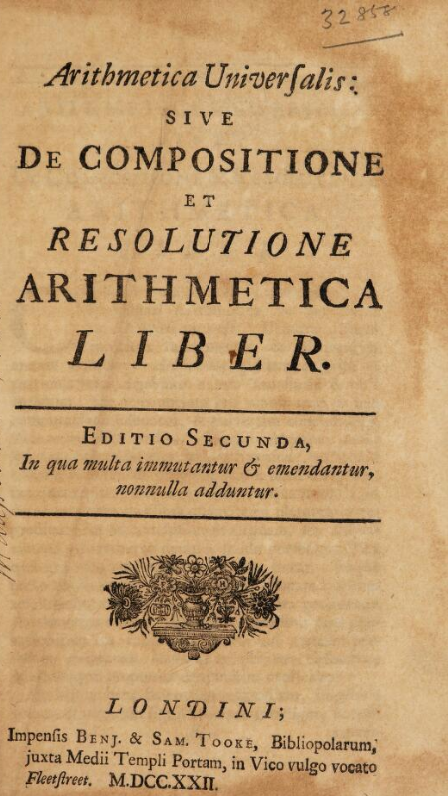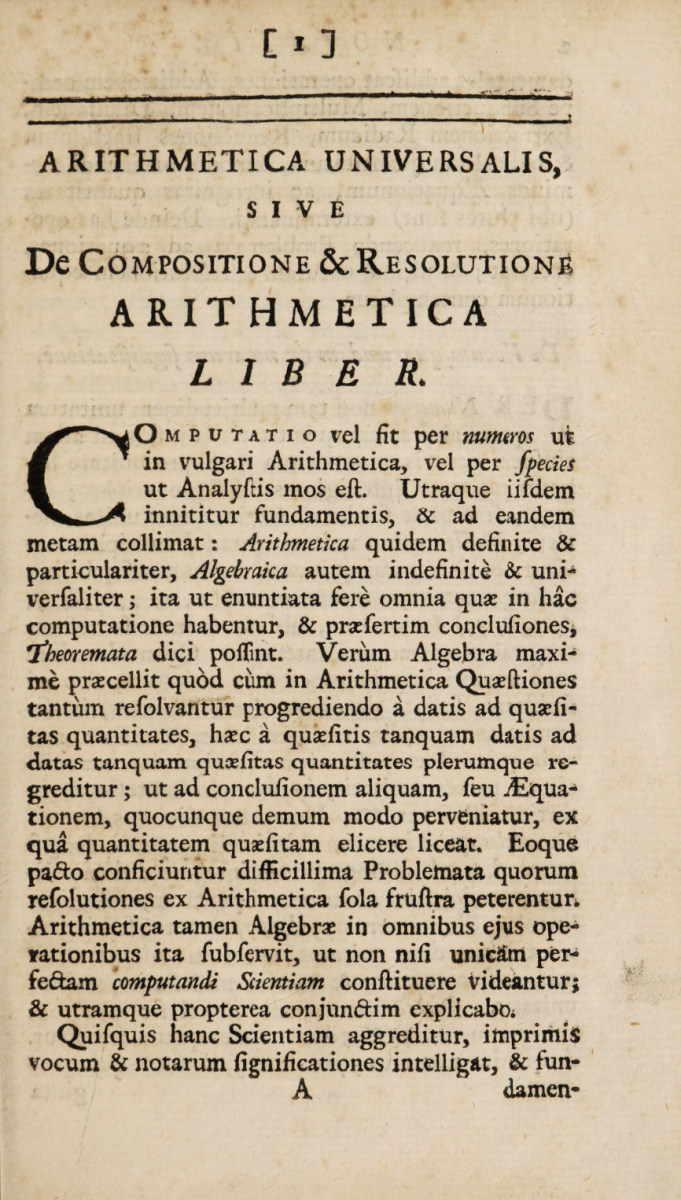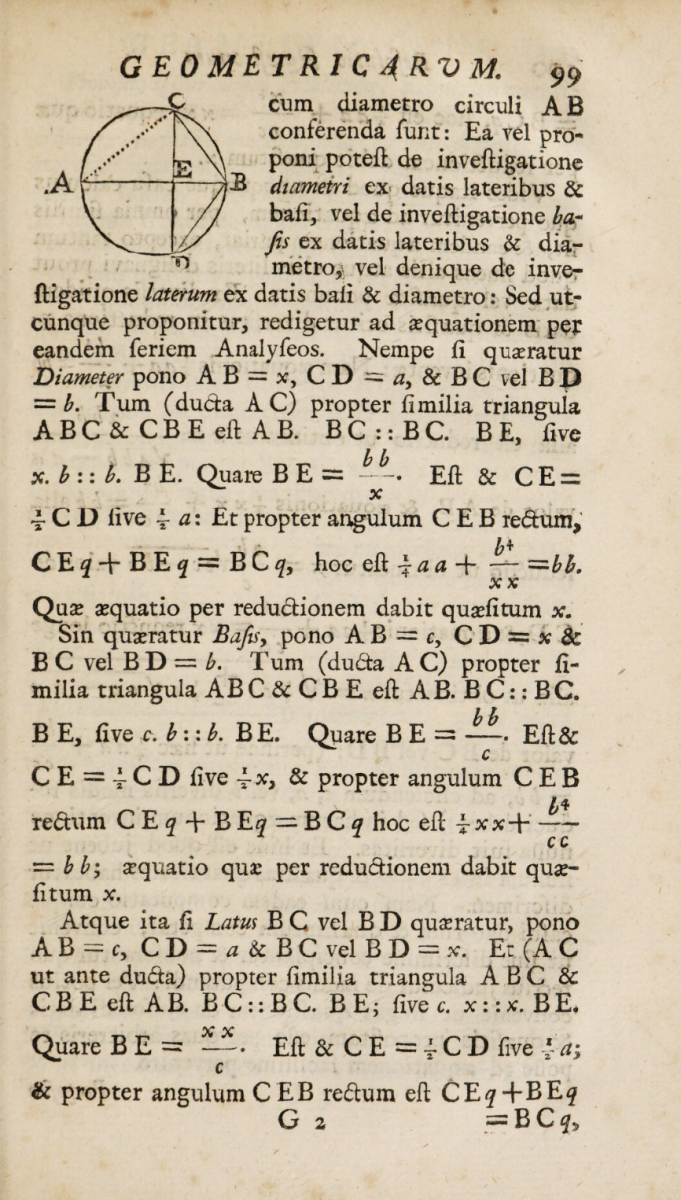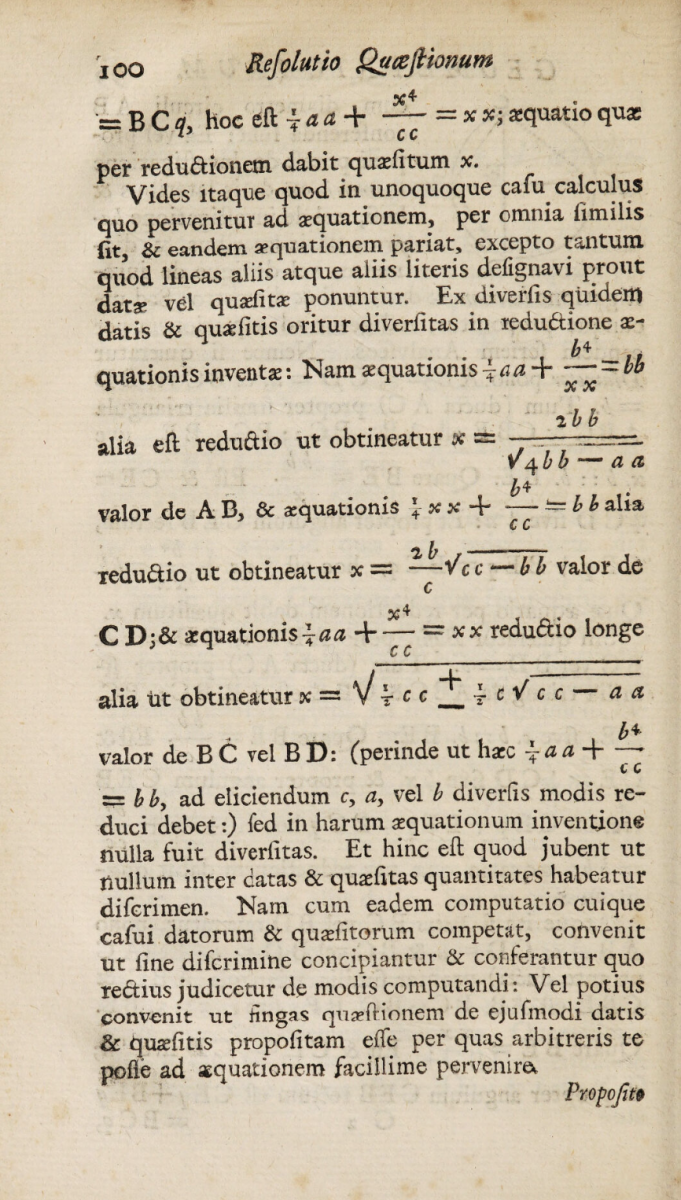- About MAA
- Membership
- MAA Publications
- Periodicals
- Blogs
- MAA Book Series
- MAA Press (an imprint of the AMS)
- MAA Notes
- MAA Reviews
- Mathematical Communication
- Information for Libraries
- Author Resources
- Advertise with MAA
- Meetings
- Competitions
- Programs
- Communities
- MAA Sections
- SIGMAA
- MAA Connect
- Students
- MAA Awards
- Awards Booklets
- Writing Awards
- Teaching Awards
- Service Awards
- Research Awards
- Lecture Awards
- Putnam Competition Individual and Team Winners
- D. E. Shaw Group AMC 8 Awards & Certificates
- Maryam Mirzakhani AMC 10 A Awards & Certificates
- Two Sigma AMC 10 B Awards & Certificates
- Jane Street AMC 12 A Awards & Certificates
- Akamai AMC 12 B Awards & Certificates
- High School Teachers
- News
You are here
Mathematical Treasure: Isaac Newton’s Arithmetica universalis
In 1707, William Whiston (1667–1752) compiled the lecture notes of Isaac Newton (1642–1727) into a Latin textbook, Arithmetica universalis: sive de compositione et resolutione arithmetica liber (Universal Arithmetic, or a book on arithmetical composition and resolution). Although the book appeared over Newton’s objections, it became popular enough to be translated into English by Joseph Raphson (1668–1712) in 1720. John Machin (1680–1751) issued the second Latin edition shown here in 1722.

The first page refers to arithmetic with whole numbers, then known as “vulgar arithmetic”.

Newton used both geometrical diagrams and algebra to discuss solutions of quadratic equations.


A full digitization of its copy is available from the Wellcome Library. See a 1769 printing of the English translation in Convergence’s Mathematical Treasures.
Frank J. Swetz (The Pennsylvania State University), "Mathematical Treasure: Isaac Newton’s Arithmetica universalis," Convergence (July 2023)




